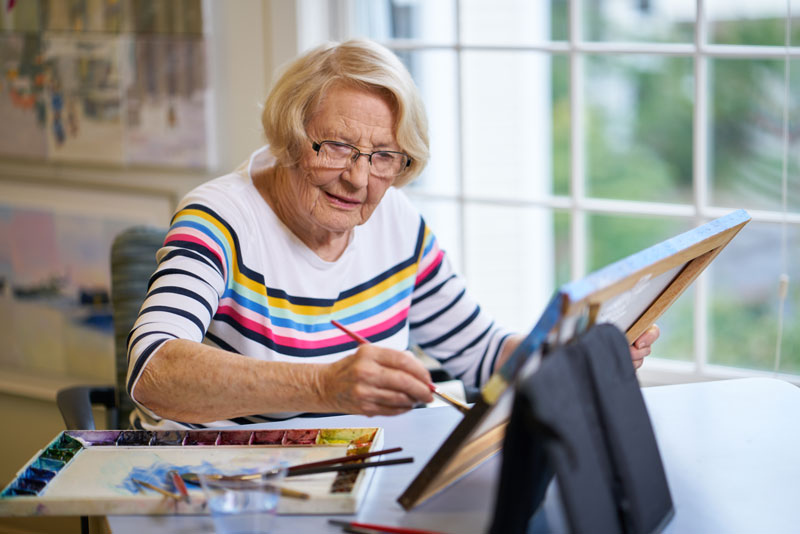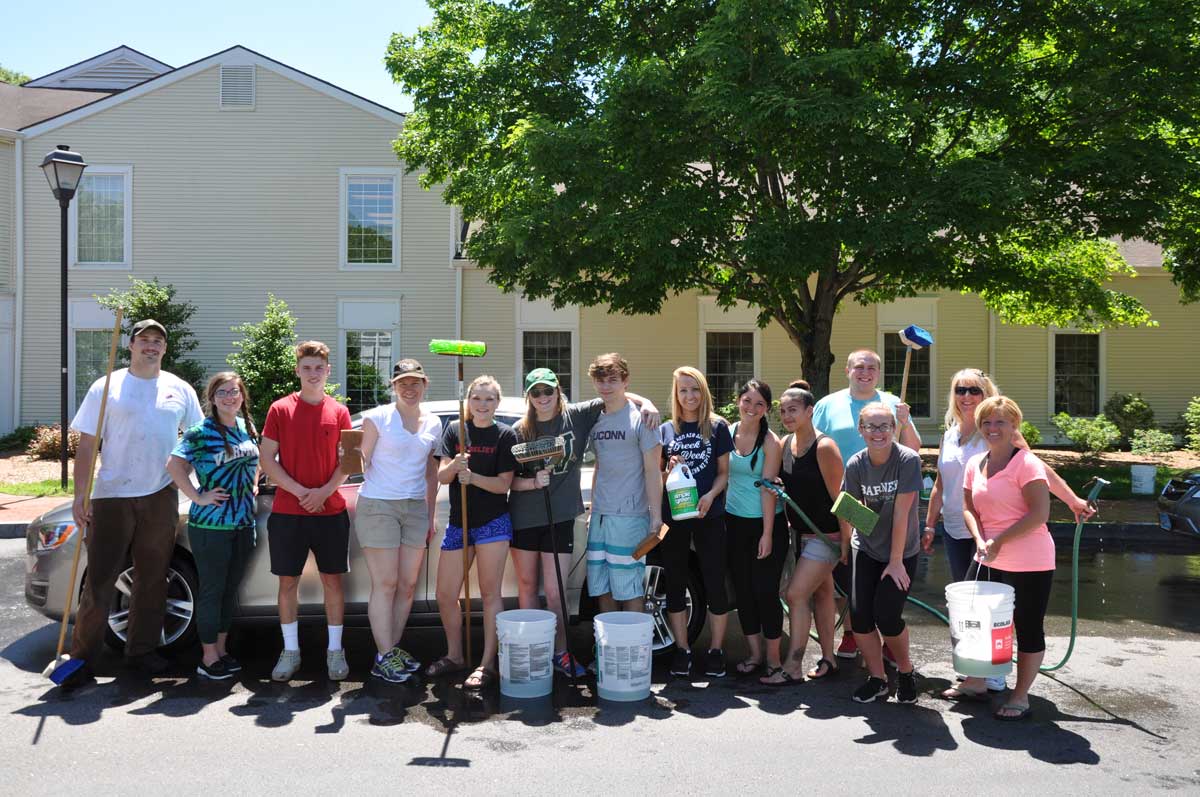How to Become an Artist After You Retire
August 23, 2019
Learn the ageless benefits of art.
Susan Nilsen lives at Essex Meadows, Essex, CT. Among the many amenities at our full-service senior living community, we offer offers residents a well-equipped art studio and weekly classes. “Learning to draw and paint has been challenging and fun,” Susan says. With the help of an encouraging instructor, “new skills have provided hours of enjoyment as I create all kinds of artistic objects. Even if my finished piece is pretty unattractive, I’ve learned that happens to even the greatest artists. At this time in my life, as I slow down but have more time, I’m grateful that I’ve discovered this new hobby.”
Susan is among a growing number of older adults rediscovering the joys of creativity. It’s no secret children love art – drawing, coloring, molding, building. Yet often as we progress through life, the creative arts are moved to the back burner. By the time we reach older adulthood, it may have been decades since we brushed paint onto a canvas or muddied our hands with clay. And that’s a shame, because art activities for senior citizens come with both immediate and long-term health benefits.
Art can make us feel younger.
According to Barbara Bagan, Ph.D., ATR-BC, art activities for the elderly offer significant quality-of-life enhancements, including the sharpening of cognitive function. Dr. Bagan cites research that shows that creative arts produce new neural pathways and thicker, stronger neurological cells called dendrites. In short, the mind is like one of our muscles: The more we exercise it, the more honed it becomes.
How else do art projects benefit seniors?
- Helping the artist relax
- Providing a sense of control
- Reducing depression or anxiety
- Assisting in socialization
- Encouraging playfulness and humor
- Improving cognition
- Offering sensory stimulation
- Fostering a stronger sense of self
- Increasing self-esteem and self-worth
- Nurturing spirituality
- Reducing boredom and loneliness
Best of all, you don’t have to be an “artist” to create art. Nor are years of practice or natural talent necessary. Research has indicated that imagination and creativity can flourish later in life, helping seniors discover new personal potential – even when suffering from Alzheimer’s or Parkinson’s disease.
Art is easy. Why not start a painting?
Sure, your work may not end up in the Louvre, but it’ll be a unique creative expression of your very own. That’s something to celebrate.
Many seniors have the desire, but are unsure how to get started. In the Essex, Connecticut, area, several galleries host art classes for senior citizens. Others offer one-on-one art lessons for seniors to teach pupils how to paint, draw or sculpt. There are a range of skill levels, for beginners to bona fide artists.
How to spark inspiration.
Here are 5 simple tips to get yourself started on the path to artistic activity:
- Open a sketch pad and start doodling: Lines, shapes, objects. Let your mind and pencil wander.
- Copy. Even the best artists start by imitating others. Find a picture you admire and see how closely you can replicate it. Or give it your personal flair.
- Grab an old picture and start painting over it. Trace it. Match the colors. Improve it in your own particular way. Have fun without worrying about how it looks.
- Look through art books or magazines. Mark anything that inspires you.
- Set up a canvas, then put on your favorite music – LOUD. Let the volume motivate you and start painting to the rhythm. If you dance a little bit, all the better!
Living amid creative opportunity.
Essex Meadows offers a senior living experience of unparalleled hospitality. Our 104-acre campus offers natural surroundings any artist would envy. If you’re interested in learning more about art activities for the elderly, contact us here.



